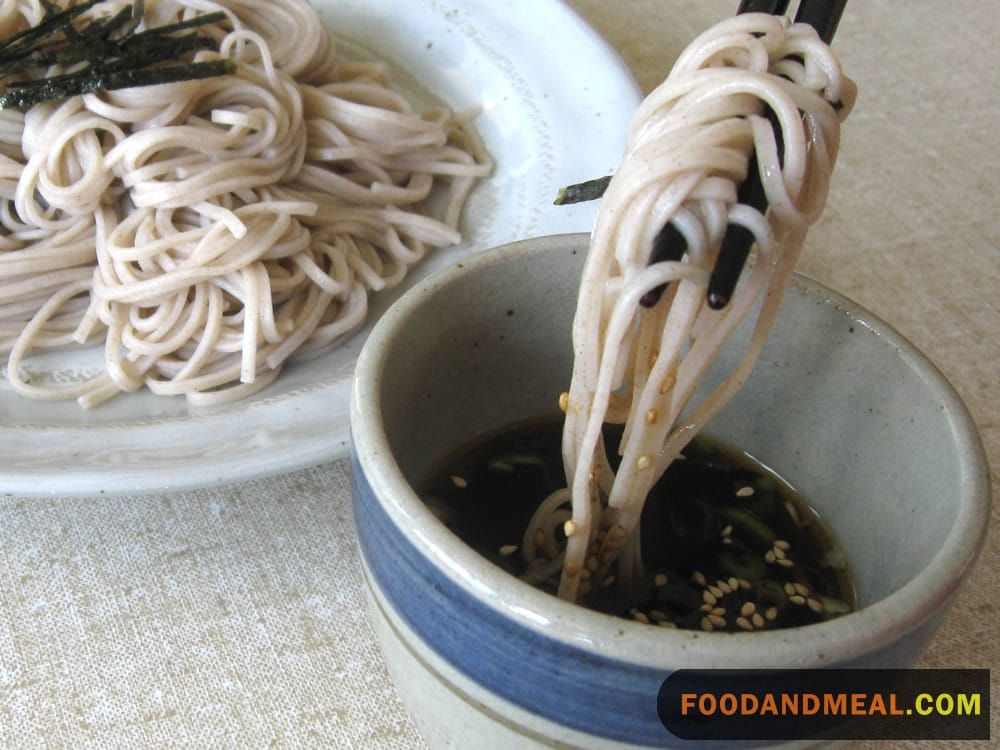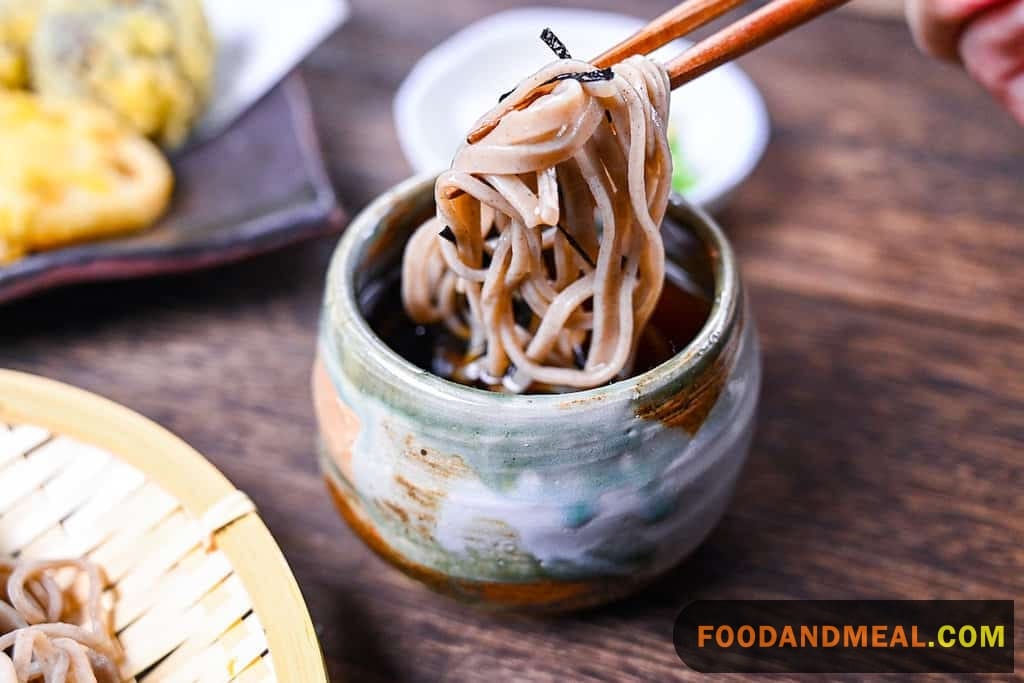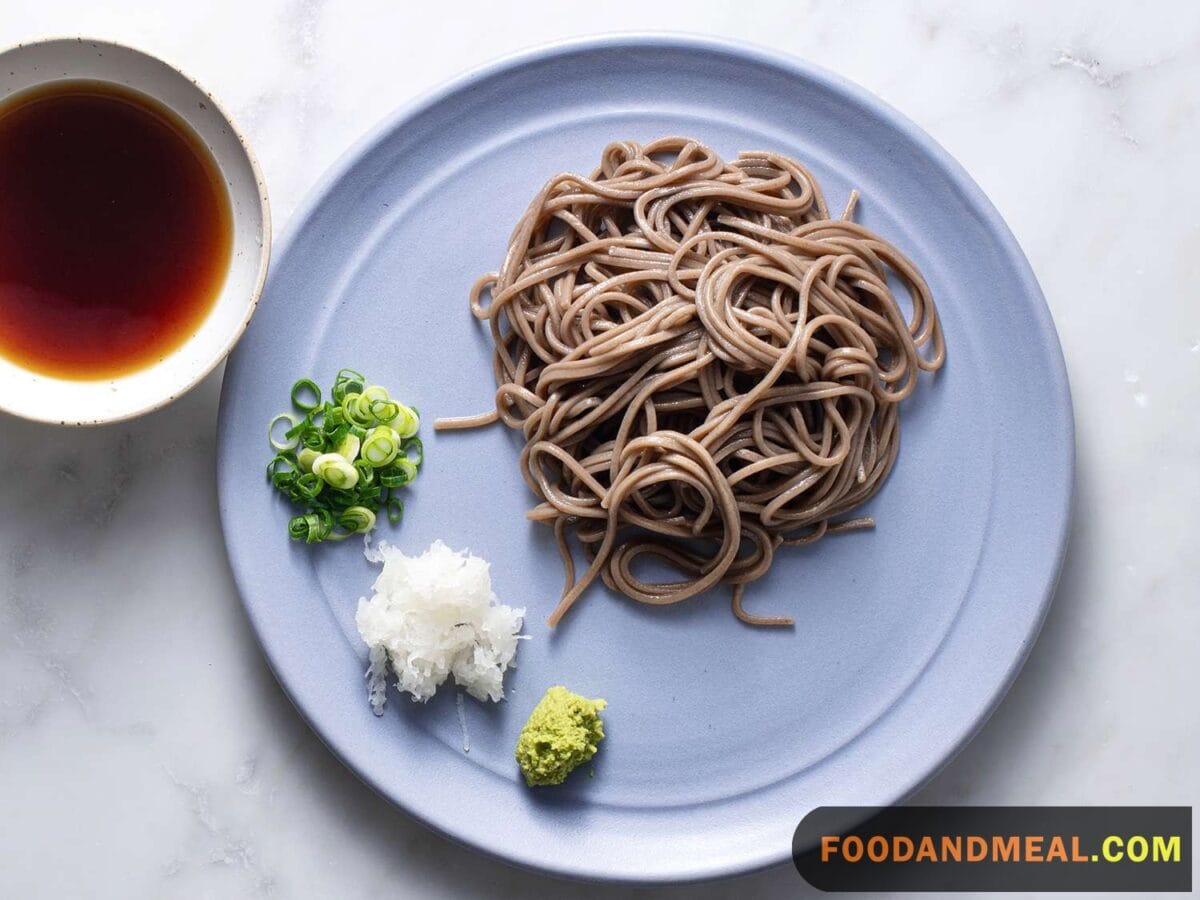Mentsuyu is the base for noodle soups. It is essential to the taste of hot and cold noodle soups. In addition, mentsuyu can also be used as a dipping sauce for noodle soup. This delicious condiment is easily made at home and can be stored in the fridge for up to a few weeks. Make sure to purchase it at a Japanese market if you can.
Mentsuyu Recipes


Mentsuyu
Equipment
Instructions
- Place everything in a pot or saucepan and bring it to a boil.
- Remove from the heat as soon as it starts to boil, and allow it to cool completely.
- Strain out the bonito flakes.
- To use as a dipping sauce, dilute 1:1 sauce to water.
- For cooking, adjust the amount according to taste.
- Good for making sauces for noodle dishes or as an alternative dip for tempura.
- Keeps for 2 weeks in the refrigerator.
Video
Notes
Nutrition
© Food And Meal
This website provides approximate nutrition information for convenience and as a courtesy only. Nutrition data is gathered primarily from the Spoonacular Database, whenever available, or otherwise other online calculators.
Alternative Preparation Method: Stovetop

Ingredients:
- 1 cup soy sauce
- 1/2 cup mirin
- 1/2 cup sake
- 3/4 cup bonito flakes (katsuobushi)
- 1 piece of kombu seaweed (about 2×2 inches)
- 1/4 cup dried shiitake mushrooms
- 1/4 cup sugar
Instructions:
- Combine soy sauce, mirin, and sake in a saucepan over medium heat. Stir well.
- Add the kombu seaweed and dried shiitake mushrooms to the mixture. Allow it to heat until just before it starts to boil. It should take about 10-15 minutes.
- Remove the saucepan from heat. Take out the kombu seaweed and discard it.
- Place the saucepan back on the stove over medium heat. Gradually add the bonito flakes, stirring gently.
- Once it reaches a gentle simmer, remove it from heat. Let it sit for a few minutes to allow the bonito flakes to settle at the bottom.
- Strain the liquid through a fine mesh strainer or cheesecloth into another container to remove the bonito flakes and shiitake mushrooms.
- Return the strained liquid to the saucepan, add sugar, and heat it again over low heat. Stir until the sugar is completely dissolved.
- Let the Mentsuyu cool to room temperature, and then store it in an airtight container in the refrigerator.
Tips for making Mentsuyu

Cooking Tips
- Dilution Matters: When using Mentsuyu as a dipping sauce or for making noodle dishes, you’ll often need to dilute it. Start with a 1:2 or 1:3 ratio of Mentsuyu to water, and adjust to your taste.
- Go Easy on Seasoning: Mentsuyu is inherently salty, so taste before adding more salt or soy sauce to your dishes. You might not need any extra.
- Store Properly: Keep your homemade or store-bought Mentsuyu in the refrigerator. It can last for several months, but check the label for the recommended storage period.
- Enhance Umami: To intensify the umami flavor of your Mentsuyu, you can simmer it with a small piece of kombu or shiitake mushrooms for added depth.
- Overheating Bonito Flakes: When making your own Mentsuyu, don’t boil the bonito flakes. This can lead to a bitter taste. Gentle simmering is the way to go.
- Ignoring Dilution: If you forget to dilute your Mentsuyu when using it in recipes, it can be overwhelmingly salty. Always check the recommended dilution ratio.
- Forgetting Straining: If you skip the straining step after simmering your homemade Mentsuyu with bonito flakes, your sauce may end up with undesirable textures from the flakes.
- Leaving It Uncovered: After making Mentsuyu from scratch, always let it cool before sealing it in an airtight container. Leaving it uncovered will result in flavor loss.
Serving Suggestions
- Soba and Udon Noodles: The classic use for Mentsuyu is as a dipping sauce for chilled soba or udon noodles. Just dilute with water to taste and dip away.
- Tsuyu Soup: Use Mentsuyu as a base for clear and flavorful Japanese soups. Simply dilute with water, heat it, and add your favorite ingredients like green onions, seaweed, or tofu.
- Marinades: Mentsuyu is an excellent marinade for grilled dishes. Try it with grilled chicken, fish, or tofu for an extra layer of flavor.
- Tempura Sauce: For tempura lovers, Mentsuyu makes an amazing dipping sauce. You can dilute it to your preferred level of saltiness.
- Sushi Rice: Drizzle Mentsuyu over freshly cooked sushi rice for a quick and delightful sushi flavor.
FAQs about Mentsuyu

- What’s the shelf life of Mentsuyu, and how should I store it?Store-bought Mentsuyu typically has a long shelf life (several months to a year), as indicated on the label. Once opened, it should be refrigerated. For homemade Mentsuyu, store it in an airtight container in the refrigerator and consume it within a few months.
- Can I use Mentsuyu as a replacement for soy sauce in recipes? Yes, you can. Mentsuyu can be an excellent substitute for soy sauce, adding depth and umami to your dishes. Just remember to dilute it as needed to balance the saltiness.
- How do I adjust the saltiness when using Mentsuyu in recipes? To control the saltiness, simply adjust the dilution ratio. If it’s too salty, dilute it with water. If you prefer a stronger flavor, use less water.
- Can I freeze Mentsuyu for long-term storage? It’s not recommended to freeze Mentsuyu. Freezing can alter its texture and flavor, so refrigeration is the best storage option.
- What’s the difference between Mentsuyu and regular soy sauce? Mentsuyu is a soy sauce-based seasoning, but it also contains dashi, mirin, and sugar. This combination gives it a unique umami flavor with sweetness, making it distinct from regular soy sauce. Use Mentsuyu when you want to add complexity to your dishes.
Explore the versatility of Mentsuyu in your kitchen. Elevate your dishes with umami magic. Get tips, serving suggestions, and more.
I'm James F Anderson, a noted sous chef from London and a Le Cordon Bleu alumnus. My career began in a Michelin-starred Parisian eatery, where my blend of classic and contemporary cooking, using seasonal ingredients, earned accolades. Recognized in culinary publications and on cooking shows, I’m committed to mentoring aspiring chefs and delivering memorable dining experiences, marking me as a standout talent in the culinary world.



